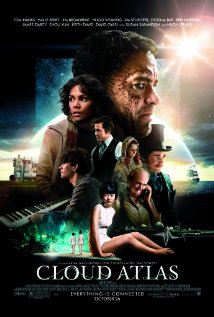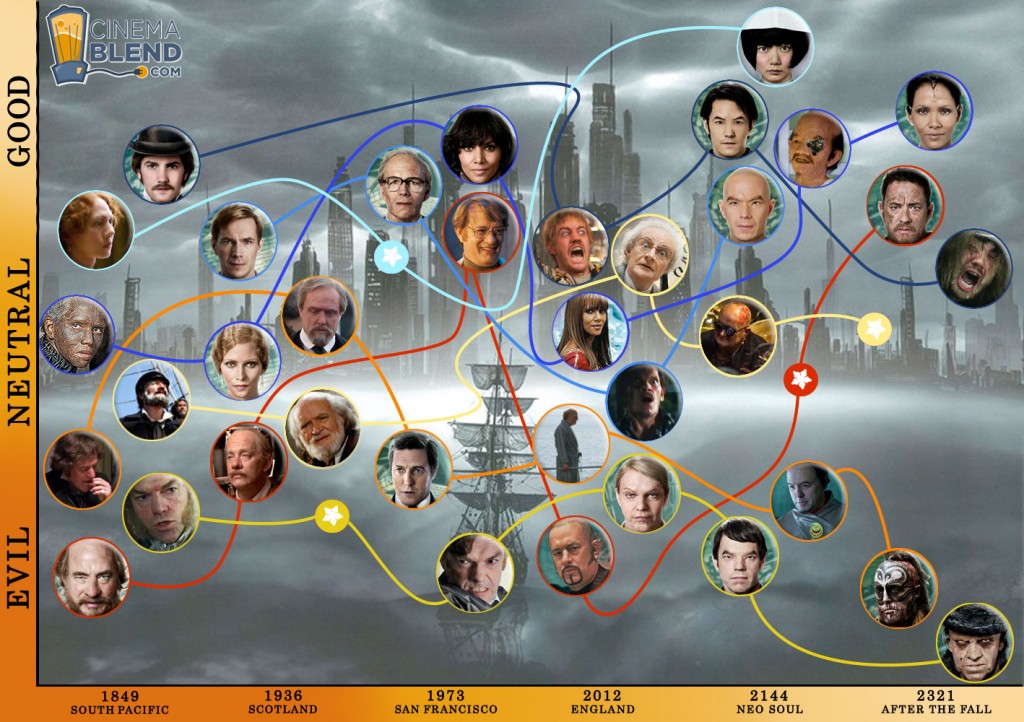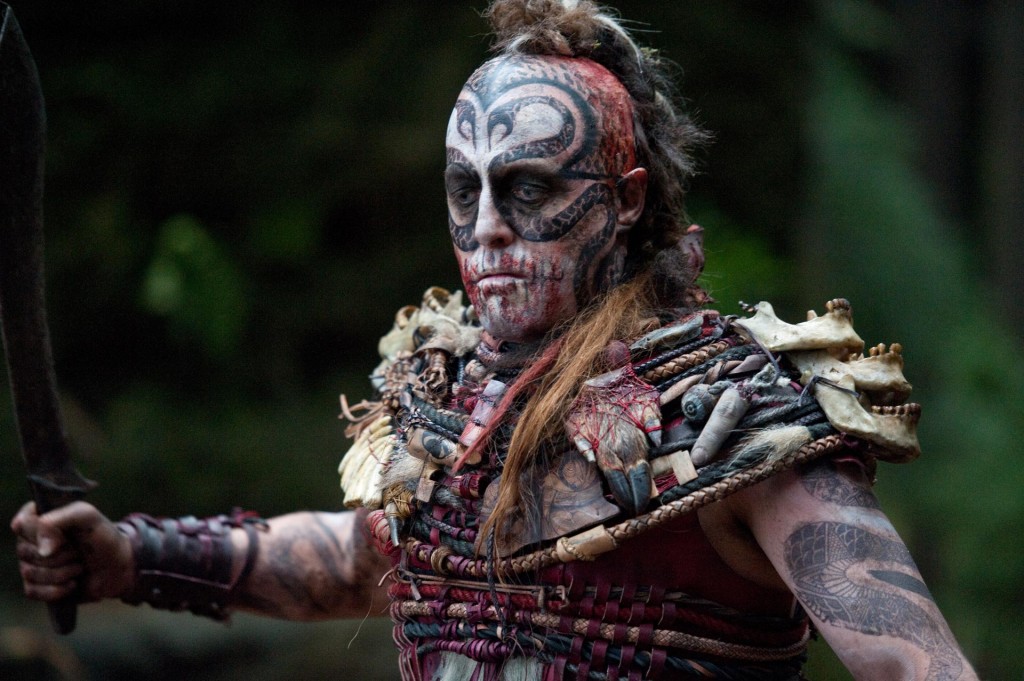 Cloud Atlas (2012)
Cloud Atlas (2012)
Dir: Andy & Lana Wachowski, Tom Tykwer
Stars: Tom Hanks, Halle Berry, Jim Broadbent, Keith David, Ben Whishaw, James D’Arcy and Hugo Weaving (among others)
If you see the IMDB link below, you’ll notice the description of Cloud Atlas reads as follows, “An exploration of how the actions of individual lives impact one another in the past, present and future, as one soul is shaped from a killer into a hero, and an act of kindness ripples across centuries to inspire a revolution.”
http://www.imdb.com/title/tt1371111/
I’ve seen the movie and I can’t quite confirm for you that this synopsis accurately describes what it’s about. I will suggest this, though: the movie is wildly ambitious and surprisingly entertaining – well worth a watch! I’m also including the link to illustrate how individual actors had the opportunity to play multiple roles across numerous settings and time periods in this film. I’m wondering if those involved in Cloud Atlas looked at the film as a challenge, a test for themselves, as it might explain the incredible casting of this picture, along with the necessity for three different directors. Regardless, the sum of the parts comes to this – at least from my POV – Cloud Atlas is an expansive, jarring collection of stories that upon an initial viewing, doesn’t necessarily connect to make one formative piece. The result, however, is impressive because even though it’s nearly impossible to follow each and every story element, the film is entertaining and still delivers on stating its theme (whether you buy into its philosophy or not). Anyhow, here’s a visual chart I found online to explain it all:
 My first question to the filmmakers would be why they saw it necessary to cut so quickly between story lines: what I mean is, there were times I felt they prematurely cut from the scene of hundreds of years into the future back to Scotland in the 1930s. I was much more satisfied at the scenes that played like a chapter in a novel, from “beginning to end” if you will. My second question to the production would be, wouldn’t it have been a tighter fit – and a little easier to follow – with just one setting less? I feel this way with several multi-layered films such as Magnolia, Nashville and many of the epics of the 1960s… In other words, if they had shaved one of the settings and/or groups of characters, perhaps they w0uld have had ample time to transition a little smoother between story lines?
My first question to the filmmakers would be why they saw it necessary to cut so quickly between story lines: what I mean is, there were times I felt they prematurely cut from the scene of hundreds of years into the future back to Scotland in the 1930s. I was much more satisfied at the scenes that played like a chapter in a novel, from “beginning to end” if you will. My second question to the production would be, wouldn’t it have been a tighter fit – and a little easier to follow – with just one setting less? I feel this way with several multi-layered films such as Magnolia, Nashville and many of the epics of the 1960s… In other words, if they had shaved one of the settings and/or groups of characters, perhaps they w0uld have had ample time to transition a little smoother between story lines?
I’m not trying to “fix” the film, I’m only saying that for me, there was one too many characters. Most film theory I’ve read and movie interviews of the so-called “masters” of filmmaking seem to agree that the large majority of narrative filmmaking hinges on the script. I would have adored the opportunity to see the Cloud Atlas screenplay in its development stage. And I would have just relished the possibility of my editing it or adjusting it so that little ol’ me – the audience member – had a shot at following the “arc” a little better. Kind of in the vein of my recent post on The Score, this film is close to four star status, but not quite due to its over-zealous scope. I’ll put it this way – I felt the same way watching the last third of Cloud Atlas as I have watching an evening of film festival shorts one after the other: only a few of those short films were as long as they needed to be, while most were 5-10 minutes too long.
Here’s one last thing – a picture of Hugh Grant, looking very anti-Love, Actually.

